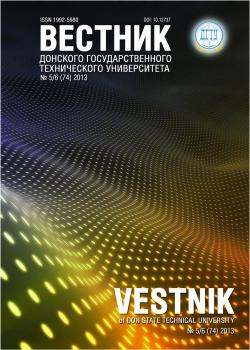A hidden semi-Markov QP-model is considered; and the way it could be embedded in a general hidden semi-Markov model is shown. The estimation problem (the first of three classical theory problems of the hidden Markov models and hidden semi-Markov models) is solved for the hidden semi-Markov QP-model. The solution is based on Shun-Zheng Yu forward algorithm for a general hidden semi-Markov model. This approach differs from the tra-ditional one and employs posterior probabilities. The estimation problem solution of the hidden semi-Markov QP-model is an important step in solving the following more specific problem. That is the selection problem based on the recorded in the data channel model error sequence from the base of hidden semi-Markov QP-models that generates the closest to the channel sequence error streams. The fitting problem solution will make it possible to evaluate the correcting capability of the noise-free codec towards errors of various types, and to select the opti-mal codec for a particular communication channel on the basis of the computer simulation experiments.
error source model, error flow, digital transmission channel, hidden semi-Markov model, evaluation problem.
Введение. В настоящее время для обеспечения надежной передачи информации по цифровому каналу активно используются методы помехоустойчивого кодирования. Подбор помехоустойчивого кодека для каждого конкретного канала удобно производить на основе экспериментов с использованием имитационных моделей каналов связи с помехами.
В [1–2] была разработана информационная система оценки применимости схем алгебраического помехоустойчивого кодирования (ИС ОПСАПК), позволяющая на основе компьютерных имитационных экспериментов оценить корректирующие способности помехоустойчивых кодеков по отношению к ошибкам различного типа и подобрать оптимальный кодек к конкретному каналу связи. Одной из значимых частей ИС ОПСАПК является база моделей источников ошибок, необходимых для проведения имитационных экспериментов, результаты которых хранятся в базе данных ИС. Классические математические модели источников ошибок описывают отдельные типы ошибок в канале, что значительно усложняет исследование корректирующей способности кодека по отношению к различным типам ошибок [1, 3]. В [4–5] предлагается модель источника ошибок, которую далее будем называть скрытой полумарковской QP-моделью (СПМQP-моделью), включающая в себя при различных параметрах многие классические модели, в том числе модели, реализованные в [2, 6]. Отметим, что СПМQP-модель принадлежит классу общих скрытых полумарковских моделей (ОСПММ), описанных в [7].
1. Deundyak, V. M., Mogilevskaya, N. S. Metody otsenki primenimosti pomekhoustoychivogo kodiro-vaniya v kanalakh svyazi. [Methods for assessing the applicability of error control coding in communication channels.] Rostov-on-Don : Don State Technical University, 2007, 85 p. (in Russian).
2. Mogilevskaya, N. S., Chugunny, K. A. Informatsionnaya sistema «Kanal»: svidetel´stvo o gosudar-stvennoy registratsii programm dlya EVM. [Information system "Channel": State Registration Certificate for software application.] No. 2008614602; record date 24.09.2008 (in Russian).
3. Deundyak, V. M., Mogilevskaya, N. S. Imitatsionnaya model´ tsifrovogo kanala peredachi dannykh i algebraicheskie metody pomekhoustoychivogo kodirovaniya. [Simulation model of digital data channel and al-gebraic methods for error control coding.] Vestnik of DSTU, 2001, vol. 1, no. 1(7), pp. 90-95 (in Russian).
4. Deundyak, V. M., Zhdanova, M. A. Obobshchennaya markovskaya model´ istochnika oshibok q-ichnogo tsifrovogo kanala neskol´kikh fizicheskikh sostoyaniy. [Generalized Markov error source model of q-ary digital channel for several physical states.] Matematika i ee prilozheniya, 2010, iss. 1 (7), pp. 34-40 (in Rus-sian).
5. Deundyak, V. M., Zhdanova, M. A. O primenenii skrytykh markovskikh modeley v modelirovanii istochnikov oshibok. [On application of hidden Markov models for error sources simulation.] Obozrenie priklad-noy i promyshlennoy matematiki, 2011, iss. 3, p. 488 (in Russian).
6. Mogilevskaya, N. S., Sukhostavskaya, K. S. Ob eksperimental´nom issledovanii kharakteristik modi-fitsirovannykh pomekhoustoychivykh blochnykh dvoichnykh kodov. [On experimental investigation of charac-teristics of the modified block error control binary codes.] Vestnik of DSTU, 2007, vol. 7, no. 3, pp. 276-282 (in Russian).
7. Yu, Shun-Zheng. Hidden semi-Markov models. Artificial Intelligence, 2010, vol. 174, no. 2, pp. 215-243.
8. Rabiner, L. R. Skrytye markovckie modeli i ikh primenenie v izbrannykh prilozheniyakh pri raspoz-navanii rechi. [Hidden Markov models and their usage in selected applications for speech recognition.] TIIER, 1989, vol. 77, no. 2, pp. 86-120 (in Russian).
9. Levinson, S. E. Continuously variable duration hidden Markov models for automatic speech recogni-tion. Computer Speech and Language, 1986, no. 1 (1), pp. 29-45.
10. Ostendorf, M., Digalakis, V. V., Kimball, O. A. From HMM’s to segment models: A unified view of stochastic modeling for speech recognition. IEEE Transactions on Speech and Audio Processing, 1996, no. 4 (5), pp. 360-378.
11. Murphy, K. P. Hidden semi-Markov models (HSMMs). Available at: http://www.cs.ubc.ca/~murphyk/Papers/segment.pdf (accessed: 27.06.2014).
12. Deundyak, V. M., Mogilevskaya, N. S. O matematicheskom modelirovanii istochnika oshibok kanala neskol´kikh sostoyaniy. [On mathematical modeling of the source channel errors of several states.] Vestnik RGUPS, 2007, no. 1, pp. 41-45 (in Russian).





